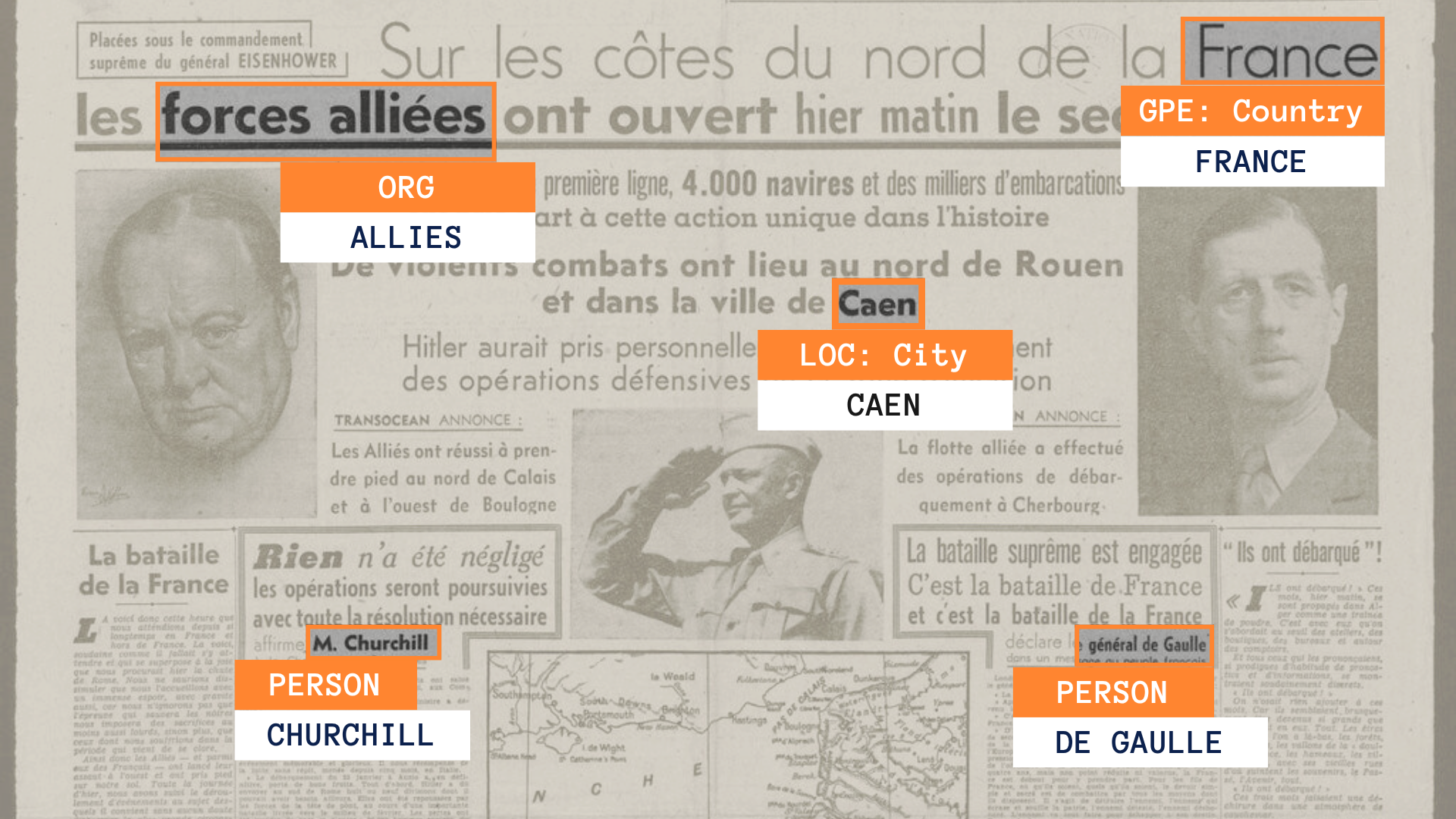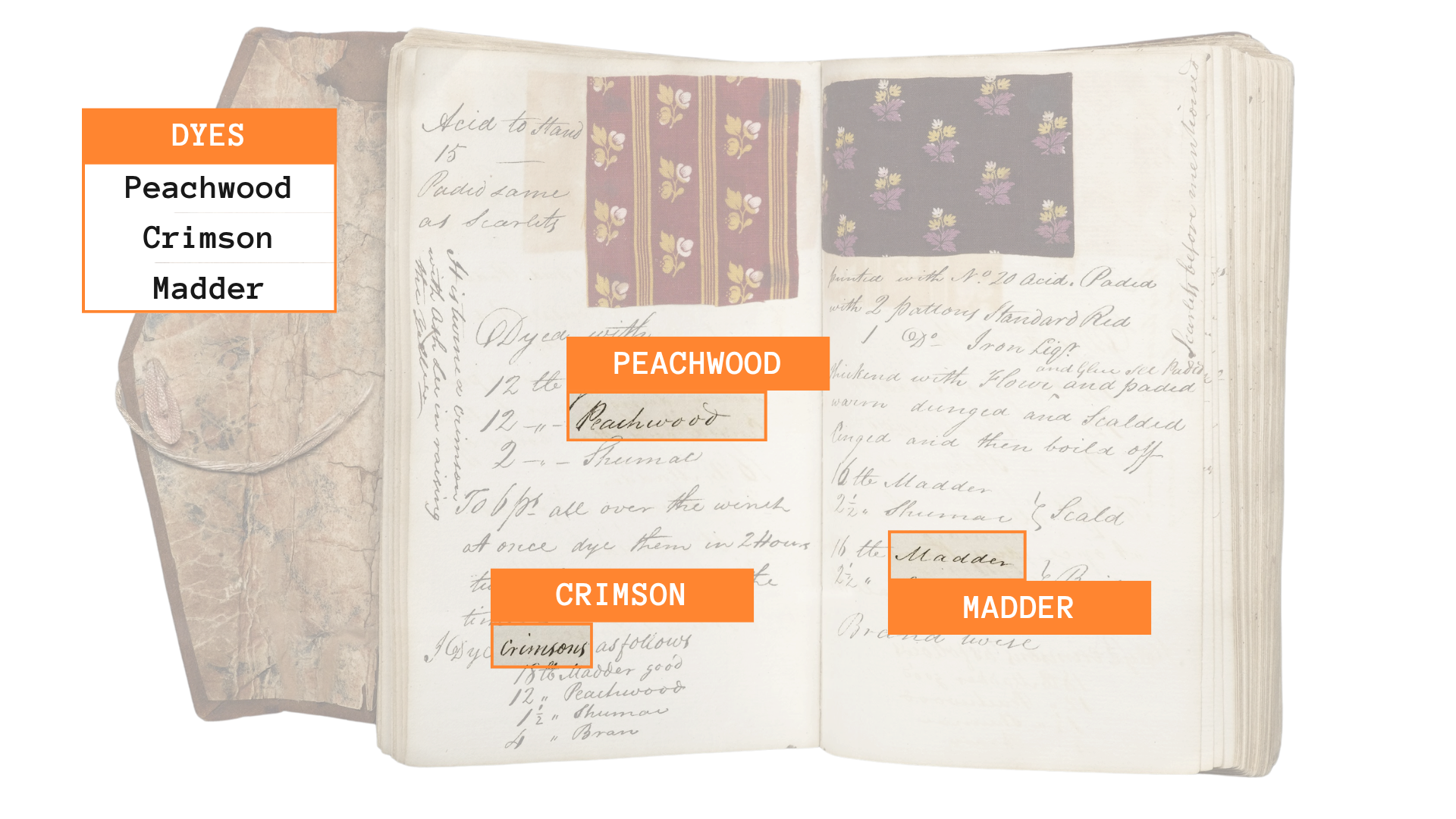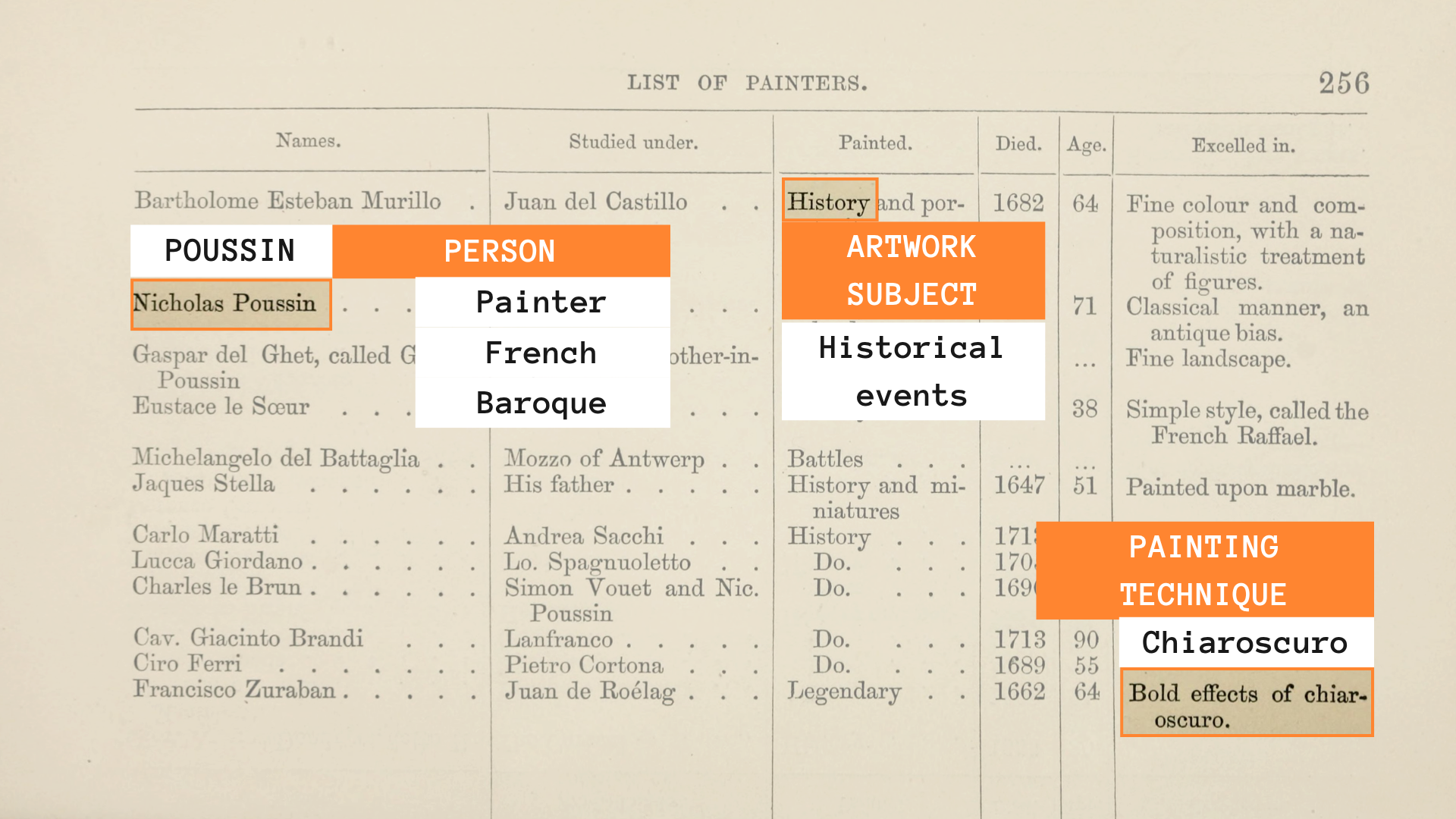Named Entities Recognition
What is Named Entities Recognition?
Named Entity Recognition (NER) is a natural language processing technique used to automatically identify and classify key pieces of information, or “entities,” within text into predefined categories such as people, organizations, locations, dates, and more.
The goal of NER is to extract structured information from unstructured text, allowing the exploitation of the information held within.
Entities detection
NER detects entities on a page by analyzing the text to find references to them. The model examines each word in its context to understand its meaning and determine whether it represents something important, such as a person or a place. In this case, the detected word or group of words becomes an “entity.”

Entity Classification
Detected entities are labelled according to their corresponding category. By applying these tags across the text, NER transforms plain language into structured data with clear classifications.

Sector-Specific Fine Tuning
Deep learning NER systems can assess contextual relationships between words, allowing them to handle ambiguity and variations in language more effectively.
Pre-trained language models can be fine-tuned for domain-specific NER tasks with relatively small datasets.

Named-Entities Recognition Applications
NER is a valuable technology for organizing and enriching cultural heritage data. It can automatically extract names of artists, historical figures, places, dates, and cultural artifacts from digitized collections, exhibition catalogs, or archival documents.
Metadata Generation
Improved Searchability
Advanced NER allows search systems to move beyond keyword matching to understand the context and meaning of queries. This semantic understanding allows users to find more relevant and accurate results, even when using ambiguous or incomplete search terms.
Linking of related resources
NER facilitates the linking of related resources by identifying shared entities across different documents or datasets. When entities such as people, organizations, or locations are consistently recognized, systems can connect information from multiple sources to form a more comprehensive network of knowledge. This interlinking supports relationship mapping and the creation of knowledge graphs that reveal deeper insights and connections within large information collections.